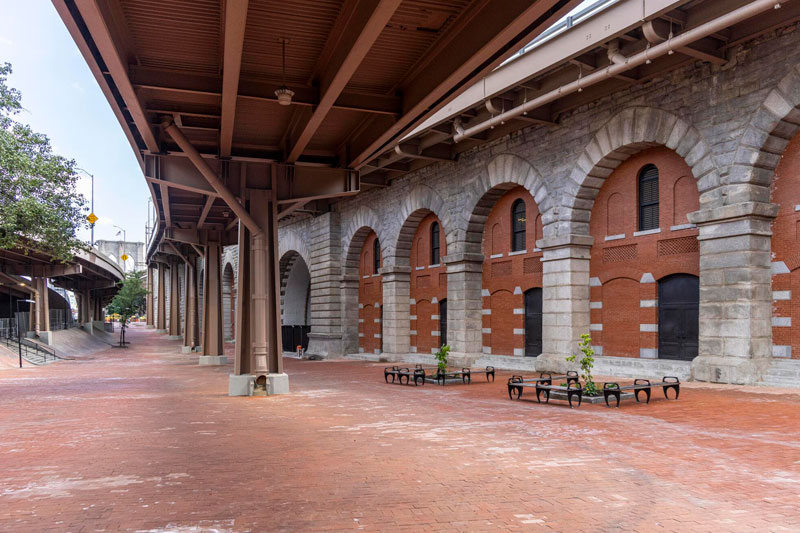New Life Under the Brooklyn Bridge as Mayor Adams Unveils $50 Million Revamp for Public Spaces
A Historic Space Reopens After 15 Years of Closure
In a major step toward reclaiming public space in Lower Manhattan, New York City Mayor Eric Adams has officially reopened a revitalized stretch of land beneath the iconic Brooklyn Bridge. Once closed off for more than 15 years, the area — now known as The Arches — has been transformed into a vibrant public plaza, offering more than two acres of fresh amenities, gathering spots, and cultural revival for the local community.
Nestled near City Hall and named after the 53 arches supporting the historic bridge, this space had long been used as a construction staging area. Now, it's stepping into a new era as a welcoming, inclusive environment for New Yorkers and tourists alike.
A $50 Million Investment to Transform Urban Life
As part of the Fiscal Year 2026 Executive Budget — dubbed by the city as the “Best Budget Ever” — Mayor Adams has committed $50 million in additional funding to enhance the space with amenities such as seating areas, landscaped plantings, improved lighting, recreational zones, and more.
The reopening and investment are key components of the city’s broader “We Outside Summer” campaign — a series of projects aimed at enhancing outdoor experiences across all five boroughs during the warmer months.
“Public space in this city is where memories are made,” Mayor Adams said during the ribbon-cutting ceremony. “This investment brings two more acres of outdoor life to our Chinatown community. It’s a place for neighbors to gather, for children to play, and for New Yorkers to relax and reconnect.”
Community at the Heart of Urban Renewal
The reopening of The Arches is more than a facelift — it’s part of a vision to bring communities together. With public space at a premium in densely populated neighborhoods like Chinatown and Lower Manhattan, this reimagined area adds a much-needed green haven and cultural corridor to the city.
Chief Public Realm Officer Ya-Ting Liu emphasized the transformation by noting, “We’re turning concrete into community. This project provides a much-needed escape in a dense urban landscape and supports local businesses and neighborhood identity.”
A Nod to History with Eyes on the Future
The new space now provides access to the vaulted underpass of the Brooklyn Bridge — a National Historic Landmark first completed in 1883. The arches, long inaccessible to the public, now serve as a symbolic and literal connection between the past and present. Over the past decade, more than $1 billion has been invested in restoring the bridge — its most significant overhaul since its original construction.
Rosa Chang, co-founder and president of Gotham Park, which has played a pivotal role in the transformation, described the space as “a love letter to New Yorkers, written in stone 142 years ago.” She praised the efforts of community stakeholders and city officials who helped turn the vision into reality.
Skateboarding, Sports, and Social Life Return to the Brooklyn Banks
A highlight of the transformation is the reintroduction of the “Brooklyn Banks,” an internationally renowned skateboarding spot once considered the heartbeat of New York’s skate scene. Working closely with The Skatepark Project and other partners, the area has been redesigned to welcome skaters back while meeting modern safety and performance standards.
“The revitalization and re-opening of the Brooklyn Banks is a monumental moment for skateboarding,” said Benjamin Anderson Bashein, CEO of The Skatepark Project. “It’s a place where global communities come to ride and connect.”
Additional areas include pickleball and basketball courts, shuffleboard zones, and shaded seating for relaxation. What was once an isolated concrete patch now pulses with life and activity.
Partnerships and Progress Across Lower Manhattan
The revival of The Arches also represents a successful collaboration among city departments, non-profit groups, local residents, and urban planners. Organizations like Gotham Park, The Skatepark Project, and multiple community boards came together to ensure the site serves not just as a tourist attraction but as a neighborhood cornerstone.
Federal and state leaders have also voiced their support for the investment. Representative Dan Goldman highlighted how the project reconnects previously divided areas of Chinatown, Two Bridges, and Lower Manhattan, noting its potential to revitalize neighborhoods long underserved in public infrastructure.
New York State Assemblymember Grace Lee echoed the sentiment: “This funding will deliver essential green spaces and sports facilities that make our community healthier and more connected.”
Looking Ahead with a Shared Vision
As the city continues to emerge from the shadow of the pandemic, projects like The Arches demonstrate how urban design can support recovery, inclusion, and cultural pride. With more than three acres of public space now available for recreation, community-building, and relaxation, this revival under the Brooklyn Bridge offers a glimpse into what the future of New York public space can look like — creative, inclusive, and community-powered.
Mayor Adams’ vision for The Arches is not just about creating another park — it’s about restoring something essential to the people: space to breathe, to gather, and to belong.
